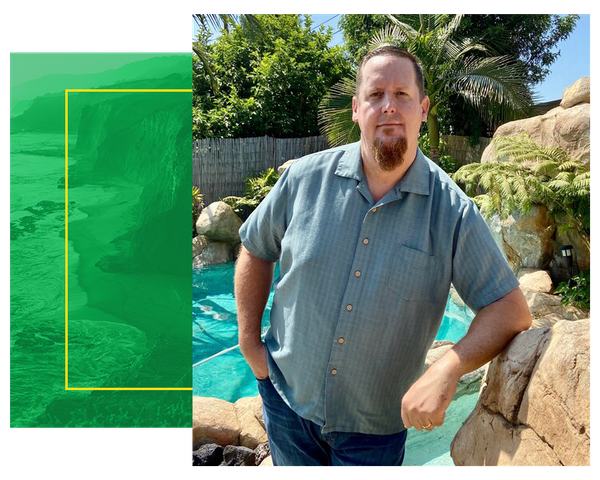Tips For Preventing Heat-Related Illness
From the Center for Disease Control and Prevention
Keeping Your Employees Safe From Heat Stress
Learn the signs and symptoms of heat-related illnesses and how to treat them.

Stay Cool
Wear Appropriate Clothing: Choose lightweight, light-colored, loose-fitting clothing.
Stay Cool Indoors: Stay in an air-conditioned place as much as possible. If your home does not have air conditioning, go to the shopping mall or public library—even a few hours spent in air conditioning can help your body stay cooler when you go back into the heat. Call your local health department to see if there are any heat-relief shelters in your area.
Keep in mind: Electric fans may provide comfort, but when the temperature is in the high 90s, they will not prevent heat-related illness. Taking a cool shower or bath or moving to an air-conditioned place is a much better way to cool off. Use your stove and oven less to maintain a cooler temperature in your home.
Schedule Outdoor Activities Carefully: Try to limit your outdoor activity to when it’s coolest, like morning and evening hours. Rest often in shady areas so that your body has a chance to recover.
Pace Yourself: Cut down on exercise during the heat. If you’re not accustomed to working or exercising in a hot environment, start slowly and pick up the pace gradually. If exertion in the heat makes your heart pound and leaves you gasping for breath, STOP all activity. Get into a cool area or into the shade, and rest, especially if you become lightheaded, confused, weak, or faint.
Wear Sunscreen: Sunburn affects your body’s ability to cool down and can make you dehydrated. If you must go outdoors, protect yourself from the sun by wearing a wide-brimmed hat, sunglasses, and by putting on sunscreen of SPF 15 or higher 30 minutes prior to going out. Continue to reapply it according to the package directions.
Tip: Look for sunscreens that say “broad spectrum” or “UVA/UVB protection” on their labels- these products work best.
Avoid Hot and Heavy Meals: They add heat to your body!

Stay Hydrated
Drink Plenty of Fluids: Drink more fluids, regardless of how active you are. Don’t wait until you’re thirsty to drink.
Warning: If your doctor limits the amount you drink or has you on water pills, ask how much you should drink while the weather is hot.
Stay away from very sugary or alcoholic drinks—these actually cause you to lose more body fluid. Also avoid very cold drinks, because they can cause stomach cramps.
Replace Salt and Minerals: Heavy sweating removes salt and minerals from the body that need to be replaced. A sports drink can replace the salt and minerals you lose in sweat.
If you are on a low-salt diet, have diabetes, high blood pressure, or other chronic conditions, talk with your doctor before drinking a sports beverage or taking salt tablets.

Stay Informed
Check for Updates: Check your local news for extreme heat alerts and safety tips and to learn about any cooling shelters in your area.
Know the Signs: Learn the signs and symptoms of heat-related illnesses and how to treat them.
Use a Buddy System: When working in the heat, monitor the condition of your co-workers and have someone do the same for you. Heat-induced illness can cause a person to become confused or lose consciousness. If you are 65 years of age or older, have a friend or relative call to check on you twice a day during a heat wave. If you know someone in this age group, check on them at least twice a day.
Monitor Those at High Risk: Although anyone at any time can suffer from heat-related illness, some people are at greater risk than others:
Infants and young children
People 65 years of age or older
People who are overweight
People who overexert during work or exercise
People who are physically ill, especially with heart disease or high blood pressure, or who take certain medications, such as for depression, insomnia, or poor circulation
How to Treat Heat-Related Illnesses
How to Recognize and Treat Heat Cramps
Heat cramps are muscle spasms, often in the abdomen, arms or calves, caused by a large loss of salt and water in the body.
What to look for:
Heavy sweating during intense exercise
Muscle pain or spasms
What to do:
Stop physical activity and move the person to a cool place
Have the person drink water or a sports drink
Instruct the person to wait for cramps to go away before resuming physical activity
Get medical help right away if cramps last longer than 1 hour.
How to Recognize and Treat Heat Exhaustion
Heat exhaustion is a severe heat-related illness requiring emergency medical treatment.
What to look for:
Heavy sweating
Cold, pale and clammy skin
Fast, weak pulse
Nausea or vomiting
Muscle cramps
Tiredness or weakness
Dizziness
Headache
Brief fainting (passing out)
What to do:
Move the person to a cool place
Loosen their clothes
Put cool, wet cloths on their body, use misting and fanning, or help them take a cool bath
Have the person sip water
Get medical help right away if:
Vomiting occurs
Symptoms get worse
Symptoms last longer than 1 hour
Confusion develops
How to Recognize and Treat Heat Stroke
Heat stroke is the most serious medical condition caused by extreme heat. It requires immediate emergency treatment. It can result in death without immediate medical attention.
What to look for:
High body temperature (104°F or higher)
Hot, red, dry or damp skin
Fast, strong pulse
Headache
Dizziness
Nausea
Confusion
Losing consciousness (passing out)
What to do:
Call 911 right away — heat stroke is a medical emergency, then:
Move the person to a cooler place
Help lower the person's temperature with a cool or cold bath, misting, fanning or applying cool cloths, if a bath is not available.
Do not give the person anything to drink.
Address Risks With a Workplace Safety Plan
No matter your industry, it is beneficial to develop written Environmental, Health, and Safety (EHS) programs to address all work-related hazards. This concept applies to the health and safety of your employees and patrons as well as the environment, focusing on specific hazards to meet legal and practical requirements. ESCC Inc. offers peace of mind when it comes to your job-specific safety requirements, including regulatory compliance at all levels.
Need to have your business be EHS compliant?

Partner With ESCC Inc.
Our company is headed by Daryl Pease, CEO and Certified Environmental and Safety Compliance Officer (CESCO). We’re here to be your partners in compliance. ESCC Inc. focuses on a team approach to successfully navigate EHS compliance, and we’re in it for your long-term success.
From the top office to the production floor, EHS compliance is only achieved if everyone is on the same page. ESCC Inc. will help you achieve compliance and safety with our Environmental, Health, and Safety documentation created for every applicable aspect of your business. Contact us today to discuss EHS programs and how they can address the safety needs and compliance regulations facing your organization. We look forward to speaking with you!
Get In Touch
Let us know briefly what you are in need of. If you don’t know where to start, let us know what issues your company is facing. We will be in touch with you to discuss how ESCC Inc. can best assist your company.
